#but u were an integral part of my childhood for 10 years and i looked at u as an older brother bc u used to help me with my homework and
Explore tagged Tumblr posts
Text
ex-step sibling relationships are defo the weirdest to navigate :/
#like our parents divorced so u moved out and we couldnt see each other regularly or even really talk abt each other in our seperate#households#but u were an integral part of my childhood for 10 years and i looked at u as an older brother bc u used to help me with my homework and#play out with me and let me write lego sets i wanted on ur christmas list bc i wasnt allowed them on mine (gender roles🙄) and made up#stupid games to distract me from feeling sick whenever we went on holiday by plane#and created so many inside jokes and genuinely made me a better person#and yet hes just gone🧍#and i had to find out u graduated uni by a mutual friends ig story😐 this fucking suuuucks#but also like what else could we have done they dont teach u abt this in pd lessons in secondary school :/#man it makes me so sad to think abt how i lost a friend just like that :( and how much i wouldve valued his advice and company over the#last 3 yrs :((#to delete
2 notes
·
View notes
Text
Smokey brand Select: Heavy is the Head
There is a criminal lacking amount of material about Godzilla on this blog. I feel ashamed that i have so haphazardly neglected the Big G. I've spoken about this before, but Godzilla means a great deal to me. I didn’t have the warmest of experiences during my childhood so i cherished the ones that weren’t horrifying. I’m melancholy for a reason and a lot of that can be traced back to my unkind environments as a kid. Godzilla is tied to many of those good memories i was able to glean off the darker circumstance of my halcyon days. I’ve seen every movie and own about half of them. It occurs to me that there are, like thirty of these things and, with the release of the what might be the final Monsterverse movie on the horizon, Godzilla vs. Kong, i wanted to take a look at the entire catalog. I wanted to revisit the films and choose what i believe to be the best in the franchise.
10. The Return of Godzilla

This was probably the first Godzilla movie i ever saw in my entire life. The second is actually on this list a ways down but this one left a massive impression on me. It was gorgeous, lavishly produced, and completely different than the film i had just watched. Not in the sense of tone, they both are on the darker side of the Goji spectrum, but this is the first time i witnessed the “death” of a Godzilla and it f*cked me right up. I remember weeping about that for days. Imagine my surprise, years later, when i found out that Godzilla 1985 was the start of an entire era of Goji films. This thing is actually a direct sequel to the 1954 Gojira film, ignoring everything in the Showa era. As such, it takes a ton of cues from that film, not only the tone, but visually as well. This Goji is like an updated version of that Goji and it really shows. I initially saw this film in the re-cut, Americanized, version Godzilla 1985. It was fine. I was a kid so i didn’t even know about the way the US butchers foreign film yet. As an adult, i made it a point to watch the original Japanese version and i can say, hands down, that version is the superior watch. I’d say check both out, Godzilla 1985 and Return of Godzilla if you’re a Goji fan but Return is definitely the better of the two.
9. Godzilla Against Mechagodzilla
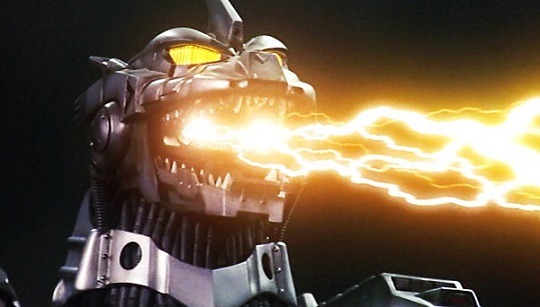
This is the first appearance of Kiryu, the third Mechagodzilla. You’ll notice that Mechagoji makes a ton of appearances on this list. That’s because it’s films are some of the best in the entire franchise, hands down. Plus, it’s my all-time favorite Goji villain. This particular version was our introduction into the loose continuity of the entire Millennium era. This saw Goji in a ton of one-shot type and experimental narratives. The only two story lines actually connected were this film and it’s direct sequel, Tokyo S.O.S. I chose this one over it’s follow-up because of the raw emotion i felt seeing the best design of Mechagoji ever captured on film, for the first time. Kiryu is a masterpiece and i loved every second it was onscreen. The narrative is an interesting one, too. It’s not top-tier but, for the Millennium series, it’s pretty ambitious. Objectively, Tokyo S.O.S might be the better film, but this one made a great first impression. If you see one, you have to see the other. They’re kind of a set.
8. Godzilla: Final Wars
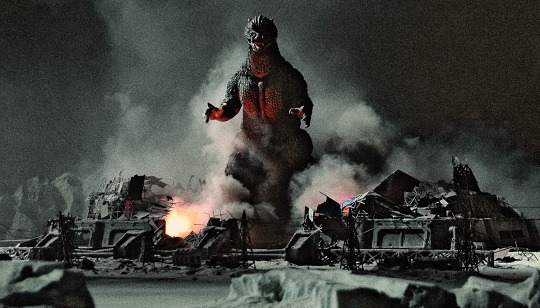
Oh, Final Wars. Your ambition is only matched by your absurdity. Look, final Wars is Endgame before other was an Endgame. It’s the cap to the entire Godzilla franchise to that point, kind of like how Destroy All Monsters was supposed to close out the Showa era. We saw how well that worked, just like this “conclusion.” This thing is unapologetic fan service, rife with the campiest of performances. I mean, the Xilliens in this are a direct reference to the original, would-be world conquerors from Planet X, first introduced in 1965. I love that sh*t! It’s chock full of Aliens, Mutants, Monsters, and more! Almost every Goji villain gets a cameo, including the first US attempt at a Goji adaption, Zilla. Gigan got an updated design that was just gorgeous, King Ghidorah gets a promotion to Kaiser, and Monster X is introduced as it’s own thing. That initial design was absolutely filthy and immediately made my top five Goji villain designs. Speaking of designs, Final Wars Goji is my favorite version of the King, Slim, mean, and breathtakingly regal in statue, it was dope seeing this suit in action, even if it was the only time.
7. Godzilla: King of the Monsters

I’m a huge fan of the new Monsterverse being woven together by Legendary over here in the States. So far, I’ve enjoyed every release, even Kong: Skull Island. I don’t like King Kong. Never have. It’s a rather offensive allegory when you think about but that’ a discussion for another day. This is about the latest release of Legendary’s universe; King of the Monsters. Like Final Wars and Destroy All Monsters before it, this film is kind of a celebration of the Goji franchise as a whole but with a Yankee twist. For the first time, we get to see what classic Toho monster look like, filtered through a modern Hollywood lens and, let me tell you, it is a sight to behold. I was already on board for the Godzilla reveal a few years before but Mothra and Rodan killed it. Those designs were amazing, particularly Mothra. She seemed like a proper threat and not some mascot. I loved it. That said, and this might be blasphemy among the fandom, but the Monsterverse version of King Ghidorah is the best goddamn version of the monster ever captured on film. This motherf*cker is smarmy, conceited, arrogant, and just plain awesome. The design, the personalities, the cruelty; It’s everything a challenger to the Throne had to have and Legendary nailed it. The movie, itself, is kind of weak in the narrative department, mostly as a knee-jerk reaction to the heavily human story of the initial Godzilla release, but the monster action is premium.
6. Godzilla vs. Biollante

Among the fandom, this is considered the very best Godzilla movie in the entire franchise. I wouldn’t go that far but i can’t deny the objective quality saturating this film. It gets right what so many of these movies get wrong; The human story line. That aspect of the story, rather than feeling like something tacked on for perspective, is integral to the overall narrative. It’s rare for that to occur and this film was the first time experienced it, myself. This is easily the best film in the Showa era but it took some time for it to be seen as such by the entire fandom. Initially, people hated this movie. They hated Biollante and wanted to see old monster with new tech. They got their wish and those films are kind of bogus. Heisei closed out strong with Space Godzilla and Destroyah, but that was after a series of mediocre retreads. Toho should have followed their instincts and moved forward with the new look they pushed with Biollante. She was dope and deserved better initially. and, yes, Biollante is female. That’s part of that integral human story i spoke of before.
5. Terror of Mechagodzilla
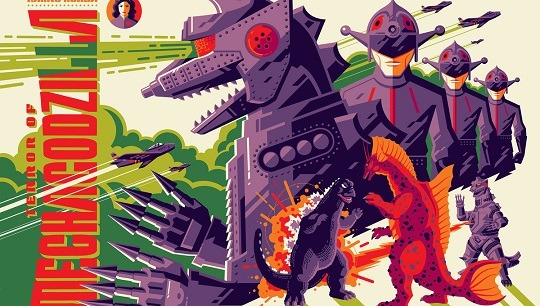
The second appearance of Mechagodzilla was one for the history books. The bionic monster was just a ferocious, just as menacing, as his initial outing but even moreso here. Terror is less heavy that the first time we saw Mechagoji, but it’s still got a ton of blood on it’s hands. This thing skews closer to the darker Showa outing but never really gives you pause like those other films do. No, it;s true to the narrative established a year before and tends to be an exercise in violence the whole way through. I really like this film and it has one of the best stories in the Showa era. It's not as tight as it’s predecessor, which is on this list, but it does a spectacular job with what it has.
4. Godzilla

So this is the first of several adaptions of the the initial Godzilla encounter. This particular one, is the first appearance of the Big G in the Monsterverse. The 2014 Godzilla film is derided for having next to no Godzilla in it, but that didn’t bother me too much. Of course you want all Goji, all the time but that makes for a lousy film. King of the Monsters did that and it is vastly inferior, narrative wise, to this flick. This film, while Godzilla-starved, does accomplish that rare thing Biollante was able to pull off and so few others in the franchise seem to do; Make the human narrative relevant. This sh*t does that exceptionally, even if they kill off the best character in the entire goddamn movie, almost immediately. Still, after Bryan Cranston bites the dust, i was still on board. A lot of this movie feels like a test run for what comes later but what a Beta it turned out to be. As a film, Godzilla is amazing. I loved the narrative, the characters, and even the monster action, what little there was initial. I really hate the MUTO. They’re kind of corny looking, a little generic, but the best designed of all the US Titans. All of the US Titans are gross looking. All of them. Great movie though!
3. Gojira
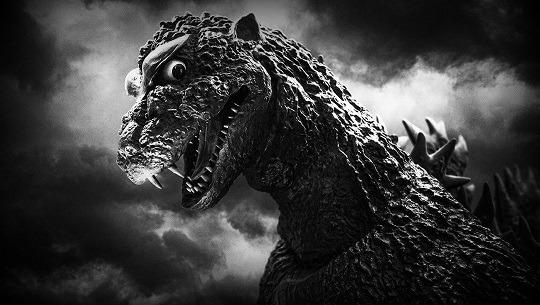
The first appearance of Godzilla and the most harrowing tale in the entire franchise. The name Godzilla is actually a misnomer. Goji’s original name was Gojira, which basically means “whale ape’ but this was mispronounced by Americans as Godzilla, thus the moniker we use today. Gojira is the correct, Japanese name, for the King of Monsters but people, worldwide, recognize Godzilla more so it’s been accepted as the proper name. Now that that little tidbit is out of the way, let’s get into the many, MANY, different cuts of this film. Similarly to Return of Godzilla, this one was recut, had scenes added with a well known US actor, dubbed, and released under the title Godzilla: King of Monsters! I’ve seen both versions and there each have their merits but the aggressive bleak tone and tragic narrative of Gojira make for a truly emotional viewing experience. Godzilla isn’t a monster in this movie, he’s literally the physical personification of that devastation inflicted upon Japan, by the atomic bomb. This film is Japan mourning the death of their great country. This is Japan reflecting on their sins. It’s an incredibly raw, violently bleak, take on such content, easily held in the same vein as Schindler’s List. That’s not hyperbole either, this film hits the same as that one. The US cut is good as a film but lacks a lot of that genuine Japanese energy. Gojira does not and of the tow, this one is far superior. both version are absolutely required viewing if you’re trying to get into Godzilla.
2. Shin Godzilla

I love Shin Godzilla. I was mad hyped when Toho announced they were going to release a proper Goji film after some years and even more on board when i heard that Hideaki Anno was going to be in charge of it. Dude is the principal architect of my all-time favorite anime, Neon Genesis Evangelion, so i knew there was going to be a brilliance to this flick not seen in the entire franchise. The take on Godzilla being a manifestation of how crippling bureaucracy and tradition clot the Japanese culture was not lost on me. This is another one of the Goji flicks that puts precedence on the human story and it does that so goddamn well, i was stunned. Look, i loved film and, as a film, this thing is outstanding. I get that it can come across as plodding and slow paced, but you have to understand, it’s showing you, real time, what it’s like to move through the Japanese government. All of that red tape, all of that inaction, is a noose around Japan’s neck and you get a real understanding of that. Not only does this thing have great direction and exceptional performances for a Japanese product, that Shin Goji design is absolutely horrifying. It’s wholly original, brilliantly executed, and easily my second favorite in the entire franchise. I love this movie and everything it represents. Shin Godzilla is absolutely required viewing for the Goji fan.
1. Godzilla vs. Mechagodzilla

I alluded to this before, but Mechagoji is my favorite Godzilla villain of all-time. This film is why. Terror was the second Godzilla movie i had ever seen. It was the first VHS i ever bought with my own money. I remember, vividly, the emotions i felt watching this mechanical monstrosity decimate both King Shiisa and Godzilla. Mechagodzilla was a legitimate powerhouse and it demonstrated that with every assault on Tokyo. I mean, he shows up, and damn near rips Anguirus’ face right the hell off! We saw blood, so much blood, spew from Goji’s best friend and it was truly heartbreaking. Angie just scuttled away in defeat, inflicting almost no damage to the violent impostor and, from there, it was just a massive show of power. Unlimited power. Narrative wise, it’s actually one of the best, most coherent stories in the entire franchise. In my opinion, it could give Biollante a run for it’s money but most would place is a step behind. Godzilla vs. Mechagodzilla is my favorite Goji film and required viewing for any fan of the series.
Honorable Mentions: Godzilla vs. Mothra, Godzilla vs Gigan, Ghidorah, the Three Headed Monster, Godzilla vs. Hedorah, Godzilla vs. Space Godzilla, Godzilla vs. Destroyah, Godzilla, Mothra, and King Ghidorah: Giant Monsters All-Out attack, Godzilla: Tokyo S.O.S, Godzilla Raids Again
2 notes
·
View notes
Text
Smokey brand Select: Heavy is the Head
There is a criminal lacking amount of material about Godzilla on this blog. I feel ashamed that i have so haphazardly neglected the Big G. I've spoken about this before, but Godzilla means a great deal to me. I didn’t have the warmest of experiences during my childhood so i cherished the ones that weren’t horrifying. I’m melancholy for a reason and a lot of that can be traced back to my unkind environments as a kid. Godzilla is tied to many of those good memories i was able to glean off the darker circumstance of my halcyon days. I’ve seen every movie and own about half of them. It occurs to me that there are, like thirty of these things and, with the release of the what might be the final Monsterverse movie on the horizon, Godzilla vs. Kong, i wanted to take a look at the entire catalog. I wanted to revisit the films and choose what i believe to be the best in the franchise.
10. The Return of Godzilla

This was probably the first Godzilla movie i ever saw in my entire life. The second is actually on this list a ways down but this one left a massive impression on me. It was gorgeous, lavishly produced, and completely different than the film i had just watched. Not in the sense of tone, they both are on the darker side of the Goji spectrum, but this is the first time i witnessed the “death” of a Godzilla and it f*cked me right up. I remember weeping about that for days. Imagine my surprise, years later, when i found out that Godzilla 1985 was the start of an entire era of Goji films. This thing is actually a direct sequel to the 1954 Gojira film, ignoring everything in the Showa era. As such, it takes a ton of cues from that film, not only the tone, but visually as well. This Goji is like an updated version of that Goji and it really shows. I initially saw this film in the re-cut, Americanized, version Godzilla 1985. It was fine. I was a kid so i didn’t even know about the way the US butchers foreign film yet. As an adult, i made it a point to watch the original Japanese version and i can say, hands down, that version is the superior watch. I’d say check both out, Godzilla 1985 and Return of Godzilla if you’re a Goji fan but Return is definitely the better of the two.
9. Godzilla Against Mechagodzilla
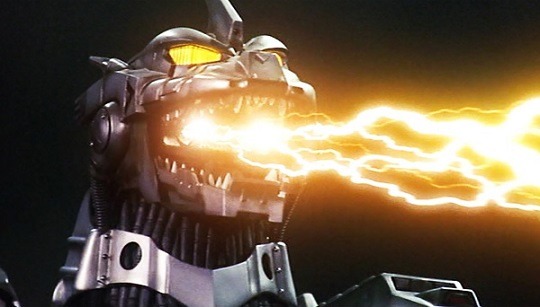
This is the first appearance of Kiryu, the third Mechagodzilla. You’ll notice that Mechagoji makes a ton of appearances on this list. That’s because it’s films are some of the best in the entire franchise, hands down. Plus, it’s my all-time favorite Goji villain. This particular version was our introduction into the loose continuity of the entire Millennium era. This saw Goji in a ton of one-shot type and experimental narratives. The only two story lines actually connected were this film and it’s direct sequel, Tokyo S.O.S. I chose this one over it’s follow-up because of the raw emotion i felt seeing the best design of Mechagoji ever captured on film, for the first time. Kiryu is a masterpiece and i loved every second it was onscreen. The narrative is an interesting one, too. It’s not top-tier but, for the Millennium series, it’s pretty ambitious. Objectively, Tokyo S.O.S might be the better film, but this one made a great first impression. If you see one, you have to see the other. They’re kind of a set.
8. Godzilla: Final Wars
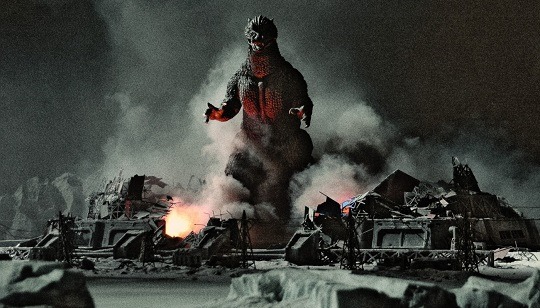
Oh, Final Wars. Your ambition is only matched by your absurdity. Look, final Wars is Endgame before other was an Endgame. It’s the cap to the entire Godzilla franchise to that point, kind of like how Destroy All Monsters was supposed to close out the Showa era. We saw how well that worked, just like this “conclusion.” This thing is unapologetic fan service, rife with the campiest of performances. I mean, the Xilliens in this are a direct reference to the original, would-be world conquerors from Planet X, first introduced in 1965. I love that sh*t! It’s chock full of Aliens, Mutants, Monsters, and more! Almost every Goji villain gets a cameo, including the first US attempt at a Goji adaption, Zilla. Gigan got an updated design that was just gorgeous, King Ghidorah gets a promotion to Kaiser, and Monster X is introduced as it’s own thing. That initial design was absolutely filthy and immediately made my top five Goji villain designs. Speaking of designs, Final Wars Goji is my favorite version of the King, Slim, mean, and breathtakingly regal in statue, it was dope seeing this suit in action, even if it was the only time.
7. Godzilla: King of the Monsters
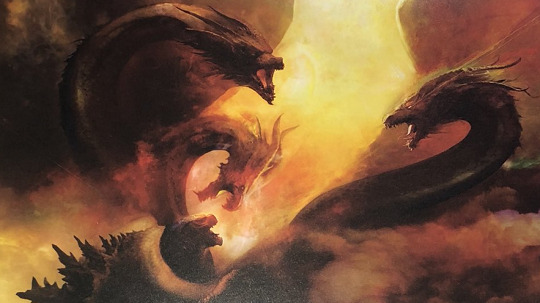
I’m a huge fan of the new Monsterverse being woven together by Legendary over here in the States. So far, I’ve enjoyed every release, even Kong: Skull Island. I don’t like King Kong. Never have. It’s a rather offensive allegory when you think about but that’ a discussion for another day. This is about the latest release of Legendary’s universe; King of the Monsters. Like Final Wars and Destroy All Monsters before it, this film is kind of a celebration of the Goji franchise as a whole but with a Yankee twist. For the first time, we get to see what classic Toho monster look like, filtered through a modern Hollywood lens and, let me tell you, it is a sight to behold. I was already on board for the Godzilla reveal a few years before but Mothra and Rodan killed it. Those designs were amazing, particularly Mothra. She seemed like a proper threat and not some mascot. I loved it. That said, and this might be blasphemy among the fandom, but the Monsterverse version of King Ghidorah is the best goddamn version of the monster ever captured on film. This motherf*cker is smarmy, conceited, arrogant, and just plain awesome. The design, the personalities, the cruelty; It’s everything a challenger to the Throne had to have and Legendary nailed it. The movie, itself, is kind of weak in the narrative department, mostly as a knee-jerk reaction to the heavily human story of the initial Godzilla release, but the monster action is premium.
6. Godzilla vs. Biollante
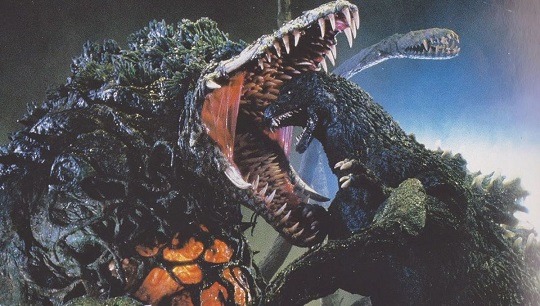
Among the fandom, this is considered the very best Godzilla movie in the entire franchise. I wouldn’t go that far but i can’t deny the objective quality saturating this film. It gets right what so many of these movies get wrong; The human story line. That aspect of the story, rather than feeling like something tacked on for perspective, is integral to the overall narrative. It’s rare for that to occur and this film was the first time experienced it, myself. This is easily the best film in the Showa era but it took some time for it to be seen as such by the entire fandom. Initially, people hated this movie. They hated Biollante and wanted to see old monster with new tech. They got their wish and those films are kind of bogus. Heisei closed out strong with Space Godzilla and Destroyah, but that was after a series of mediocre retreads. Toho should have followed their instincts and moved forward with the new look they pushed with Biollante. She was dope and deserved better initially. and, yes, Biollante is female. That’s part of that integral human story i spoke of before.
5. Terror of Mechagodzilla
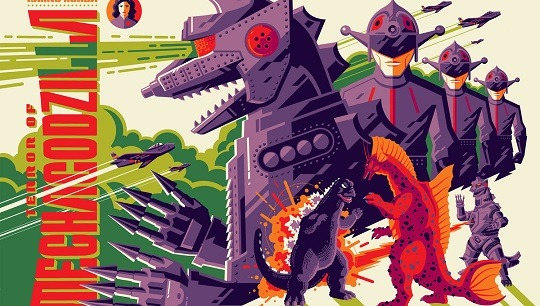
The second appearance of Mechagodzilla was one for the history books. The bionic monster was just a ferocious, just as menacing, as his initial outing but even moreso here. Terror is less heavy that the first time we saw Mechagoji, but it’s still got a ton of blood on it’s hands. This thing skews closer to the darker Showa outing but never really gives you pause like those other films do. No, it;s true to the narrative established a year before and tends to be an exercise in violence the whole way through. I really like this film and it has one of the best stories in the Showa era. It's not as tight as it’s predecessor, which is on this list, but it does a spectacular job with what it has.
4. Godzilla
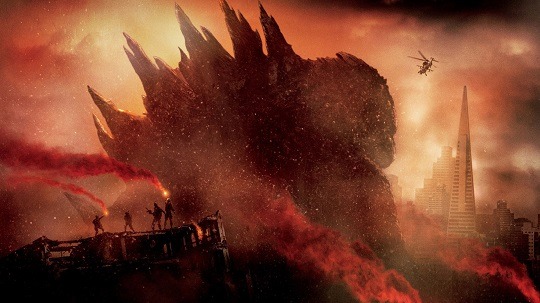
So this is the first of several adaptions of the the initial Godzilla encounter. This particular one, is the first appearance of the Big G in the Monsterverse. The 2014 Godzilla film is derided for having next to no Godzilla in it, but that didn’t bother me too much. Of course you want all Goji, all the time but that makes for a lousy film. King of the Monsters did that and it is vastly inferior, narrative wise, to this flick. This film, while Godzilla-starved, does accomplish that rare thing Biollante was able to pull off and so few others in the franchise seem to do; Make the human narrative relevant. This sh*t does that exceptionally, even if they kill off the best character in the entire goddamn movie, almost immediately. Still, after Bryan Cranston bites the dust, i was still on board. A lot of this movie feels like a test run for what comes later but what a Beta it turned out to be. As a film, Godzilla is amazing. I loved the narrative, the characters, and even the monster action, what little there was initial. I really hate the MUTO. They’re kind of corny looking, a little generic, but the best designed of all the US Titans. All of the US Titans are gross looking. All of them. Great movie though!
3. Gojira
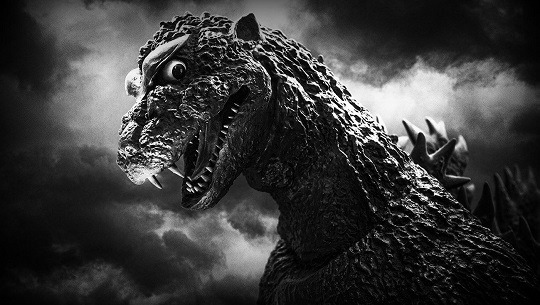
The first appearance of Godzilla and the most harrowing tale in the entire franchise. The name Godzilla is actually a misnomer. Goji’s original name was Gojira, which basically means “whale ape’ but this was mispronounced by Americans as Godzilla, thus the moniker we use today. Gojira is the correct, Japanese name, for the King of Monsters but people, worldwide, recognize Godzilla more so it’s been accepted as the proper name. Now that that little tidbit is out of the way, let’s get into the many, MANY, different cuts of this film. Similarly to Return of Godzilla, this one was recut, had scenes added with a well known US actor, dubbed, and released under the title Godzilla: King of Monsters! I’ve seen both versions and there each have their merits but the aggressive bleak tone and tragic narrative of Gojira make for a truly emotional viewing experience. Godzilla isn’t a monster in this movie, he’s literally the physical personification of that devastation inflicted upon Japan, by the atomic bomb. This film is Japan mourning the death of their great country. This is Japan reflecting on their sins. It’s an incredibly raw, violently bleak, take on such content, easily held in the same vein as Schindler’s List. That’s not hyperbole either, this film hits the same as that one. The US cut is good as a film but lacks a lot of that genuine Japanese energy. Gojira does not and of the tow, this one is far superior. both version are absolutely required viewing if you’re trying to get into Godzilla.
2. Shin Godzilla
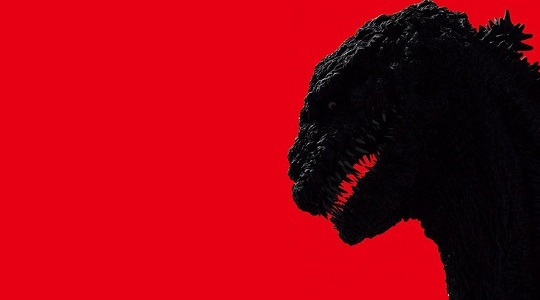
I love Shin Godzilla. I was mad hyped when Toho announced they were going to release a proper Goji film after some years and even more on board when i heard that Hideaki Anno was going to be in charge of it. Dude is the principal architect of my all-time favorite anime, Neon Genesis Evangelion, so i knew there was going to be a brilliance to this flick not seen in the entire franchise. The take on Godzilla being a manifestation of how crippling bureaucracy and tradition clot the Japanese culture was not lost on me. This is another one of the Goji flicks that puts precedence on the human story and it does that so goddamn well, i was stunned. Look, i loved film and, as a film, this thing is outstanding. I get that it can come across as plodding and slow paced, but you have to understand, it’s showing you, real time, what it’s like to move through the Japanese government. All of that red tape, all of that inaction, is a noose around Japan’s neck and you get a real understanding of that. Not only does this thing have great direction and exceptional performances for a Japanese product, that Shin Goji design is absolutely horrifying. It’s wholly original, brilliantly executed, and easily my second favorite in the entire franchise. I love this movie and everything it represents. Shin Godzilla is absolutely required viewing for the Goji fan.
1. Godzilla vs. Mechagodzilla

I alluded to this before, but Mechagoji is my favorite Godzilla villain of all-time. This film is why. Terror was the second Godzilla movie i had ever seen. It was the first VHS i ever bought with my own money. I remember, vividly, the emotions i felt watching this mechanical monstrosity decimate both King Shiisa and Godzilla. Mechagodzilla was a legitimate powerhouse and it demonstrated that with every assault on Tokyo. I mean, he shows up, and damn near rips Anguirus’ face right the hell off! We saw blood, so much blood, spew from Goji’s best friend and it was truly heartbreaking. Angie just scuttled away in defeat, inflicting almost no damage to the violent impostor and, from there, it was just a massive show of power. Unlimited power. Narrative wise, it’s actually one of the best, most coherent stories in the entire franchise. In my opinion, it could give Biollante a run for it’s money but most would place is a step behind. Godzilla vs. Mechagodzilla is my favorite Goji film and required viewing for any fan of the series.
Honorable Mentions: Godzilla vs. Mothra, Godzilla vs Gigan, Ghidorah, the Three Headed Monster, Godzilla vs. Hedorah, Godzilla vs. Space Godzilla, Godzilla vs. Destroyah, Godzilla, Mothra, and King Ghidorah: Giant Monsters All-Out attack, Godzilla: Tokyo S.O.S, Godzilla Raids Again
2 notes
·
View notes
Text
11 questions tag game
Thanks for the tag, @hardlyfluent! <3
1. how old were you when you started learning other languages besides your native one(s)?
I was 18 and a freshman in college, but I’d discovered my love for foreign languages years before.
2. have you ever dated one of your crushes before?
Only once...
3. what is your strengths and weaknesses as a language learner?
Strengths: my passion makes learning feel like a hobby and not work; I have an ear for accents (and so when I’m abroad people usually don’t peg me as an American)
Weakness: I’m a perfectionist and despond for three days if an interaction didn’t go the way I’d intended
4. why are you studying the languages you are studying?
Because I have this weird, all-consuming fascination of French language and Francophone cultures to the point where it’s become an integral part of my identity; the same with German, except my fascination is not quite “all-consuming”.
5. where in the world would u move to if u could?
Somewhere in Bavaria, like Bayreuth.
6. what is your favourite food in ur target language(s)?
French: je ne refuserais jamais un bon velout�� de legumes
German: ich würde nie eine gute Gemüsesuppe ablehnen
7. what is your favourite genre of books and/or movies?
I have several faves regarding books: French lit from romanticism to postmodernism, esp. postcolonialism; feminist literature and women writers; l’écriture migrante au Québec; Weimar Classicism.
8. do you like poetry? if so, who is your favourite poet?
I’m apt to grow impatient reading poetry but do feel a special kinship with those who write about nature, like Mary Oliver, Robert Frost, and H.W. Longfellow.
I also can’t help loving Rimbaud and Hugo.
And as of late I’m getting into H.D. and Rilke.
9. have you ever studied abroad?
Yes, in France and in Germany.
10. what is ur biggest fear?
Being physically/sexually assaulted by men and being powerless to stop them.
11. what is the one thing u can’t live without?
Nature.
My questions:
1. Where would you like to see yourself in 10 years?
2. Did you have a book that you loved in childhood? A story that sticks with you even today?
3. What would your house of dreams look like?
4. In what sort of atmosphere do you really feel yourself?
5. Do you prefer the country, the city, or somewhere in between?
6. What music do you listen to to feel motivated?
7. Are you reading anything right now? If so, what?
8. Which languages would you like to be able to speak?
9. Where is one of the nicest places you’ve visited?
10. And what is the best thing you ever ate?
11. What makes life sweet for you? (Not a person.)
I tag @areyouinthemood, @cestlavieparis, @ruelune, and @millscestmoi
17 notes
·
View notes
Text
omg sara @shinelikeastarlight tagged me to do this super long tag game hlep
tagging: @void-for-president, @the-alexandrian-alchemist, @starboysisko, @magnmite, @yacobeanreign (of course only if y’all want)
last text sent: "cool [thumbs up emoji]”
list three favourite colours: ???? don’t do this to me
what time did u wake up at today: 11am, it’s reading period don’t judge me what were u doing last night at midnight: playing drunk rock band name something you can’t wait for: this godforsaken quarter to be over when was the last time u saw ur mother: over winter break/new year’s one thing u wish u could change abt ur life: the crippling depression/abandonment issues are getting kinda old, I’d like to feel like I have a stable community/family who love and support me whats getting on ur nerves rn: the discourse favourite tv shows: star trek (all of them but esp DS9), idk I’m sort of obsessed with yuri on ice at the moment, those two are the main ones tbh? first best friend: my girl India who doesn’t have a tumblr but we’ve been best friends since we met on the playground at age 5. our moms are also tight. listening to rn: nothing, the sound of my laptop fan straining to keep my computer from bursting into flame
3 fears: never having a group of people I feel I can call family, never being in love, cavities
4 turn ons: self-awareness/humility, being sensitive about & respectful of my dysphoria, trust/willingness to be vulnerable, being honest & vocal about what you like 4 turn offs: being boring, being insensitive/distant, not being conscientious about how you interact with my body (i.e. assuming you can just treat my body the same way you’d treat a woman’s body and that’s a-ok), heterosexuality of any kind sexual orientation: gay tbh senior year quote in my year book: oh god some generic hillary clinton quote about feminism I don’t even wanna remember it first thing i notice in a person: ?? what they look like? shoe size: 7M/9W (US) eye colour: hazel hair colour: brown favourite item of clothing: probably my leather jacket, close runners up are my high-waisted black jeans that look good with pretty much anything and my crop top that says “I got to second base at Jonah’s bar mitzvah, January 7th 1978″ what colour of underwear i’m wearing rn: blue/brown/white stripes favourite season: whichever one has like 60-70F weather, used to be summer but now that’s spring lol how much time i spent on designing my blog: not much I just picked a theme the reason i joined tumblr: this is pretty sad but... I wanted to make friends do i ever get “good morning” or “goodnight” texts: only if I’m like talking to someone right before going to bed when did i last hold hands: don’t remember how long does it take me to get ready in the morning: depends, anywhere from 10 minutes to an hour have i shaved my legs in the past 3 days: LMAO try the last 4 years where am i rn: on my couch do i like music loud or at a reasonable level: reasonable, loud noises are scary 3 things i love: my friends, dogs, idk earth? how i feel rn: I need to gtf to sleep lol something i rlly, rlly want: to feel like I don’t have to radically change my body to be attractive to the people I want to attract 3 things that upset me: feeling like I’m hurting or burdening other people, straight men trying to hit on me, the persistent feeling that being transmasc somehow makes me a bad person what i find attractive in other ppl: appreciating subjects other than your field of study, confidence, ambition, someone who’s accomplished interesting things in their life, being friendly, genuine & not condescending 3 habits i have: staying in bed all day on days when I don’t have to do anything, only eating part of my lunch during lunch time and eating the rest for dinner, carrying off ridiculous amounts of free food from events something i fantasize abt: feeling comfortable and secure in my attractiveness vis a vis how my body looks, and in my presence in gendered spaces something im talented at: singing, memorization, embarrassing myself the blog i give the most notes to: idk, probably sara tbh last person re-blogged sth from me: I haven’t checked my notifications in a while o_0 do i smoke/drink: I drink with friends my favourite food: I’m a big fan of things with cheese in them. also guacamole. my favourite dessert: it really depends ugh I guess cake? what i did yesterday: had my last day of classes, went to work, went to an award ceremony/opening gala for an integrated DNA technologies sponsored exhibit at the field museum (it was so fancy I felt so grown up and fancy), went to kat’s birthday party number of kids i want: ???? number of siblings i have: none something thats constantly on my mind: trangst (trans angst)
last person i messaged on tumblr: teddy (void-for-president) can i drive: nope :/ what state or part of the world do i live in: Chicago, from Brooklyn am i in school: 3rd year undergrad do i get grossed out easily: not generally, but certain specific things will do it (ex. dead animals especially FISH) somewhere i would like to visit for a week: hm maybe go back and see Alaska again? check on that mountain biking trail I helped build in 10th grade i’ll love u if: make an effort to spend your free time with me/take the initiative in telling me that you value my being in your life last show i binge-watched: I binged legend of korra over winter break, probably that what words upset me the most: idk I guess people telling me I’m wrong for existing in the spaces that I occupy? what words make me feel best abt myself: when people tell me they value having me in their lives and that I make them feel good about themselves a wish that i’ve wished for repeatedly on 11:11: that’s not a thing that I do :/ who i would switch lives with for a day: idk maybe someone who’s already gone on T and sings just so I could get a sense of what the voice change is like for a singer? or like. a famous celebrity or something. my favourite ice cream: green tea I think? allergies: minor allergy to raw eggplant I think, every time I eat undercooked eggplant my mouth starts to feel like it’s swelling up, not like my throat is being blocked off but just my mouth starts to hurt quite noticeably sexiest person to come to mind immediately: alskdjfsldk this is really hard uhh uhhh ok see my first thought is like star trek characters but I can’t say that ok let’s go with john boyega he’s gorgeous and seems like a ray of sunshine my childhood career choice: biologist! one of my insecurities: that being transmasc nonbinary and still participating in some women’s spaces/not letting go of some aspects of womanhood makes me a bad person and specifically is harming transfeminine people how many blogs am i following: just over 100 I think how many tabs/different windows do i have open at this very moment: 2 windows, this is the only tab open in this window because my internet sucks and tumblr is a monster website, the other window has 13 tabs coke or pepsi: not super into either, I guess coke although my aunt used to work for pepsi so I should be loyal tea or coffee: tea movie or book: movie probably, I don’t actually read that much it’s embarrassing, although frankly I don’t really watch movies that much either a sense i would be willing to lose: none omg! I guess if I had to pick taste? since taste is mostly smell anyway quote i live by: I don’t really? type of accessory i wear the most: does the leather jacket count? otherwise none last awkward situation i found myself in: I kept trying to pet eva’s dog today but I just ended up scaring her what time is it rn: way too late
a song that made me cry: hallelujah by leonard cohen, not actually, just like made me v emotional (yes I’m thinking abt that yiddish cover) first song u ever sang at karaoke: are we talking like legit karaoke at a karaoke place or like hanging out in my best friend from middle school’s basement singing along with her CD of karaoke tracks for the hottest hits of the mid-2000s bc I don’t remember the former but the latter was definitely sk8r boi
3 notes
·
View notes
Link
As diplomats and scientific experts debate the practicalities of the Paris climate change agreement at Cop23 in Germany next month, the UN can call upon one of its most important yet little-known creations for advice and support. The UN University opened in Tokyo in 1975 and works as a scientific institute, where academics tackle global sustainability and environmental challenges. Cop23 is this year’s iteration of the UN’s annual climate change conference, which takes place from November 6 to 17 in Bonn, where the focus will be on looking at ways to best implement the landmark agreement, the Paris Accord, struck by countries across the world two years earlier. “While the Paris Accord deals with the issue of limiting emissions that contribute to climate change, there’s a great deal else that needs to be done on the environment in the developing world,” said Dr David Malone, the university’s rector. The university is currently working on hundreds of research projects to find solutions related to all 17 of the UN Sustainable Development Goals. Preparing for natural hazards is one of them, as climate change is strengthening an unprecedented number of natural hazards across the globe, such as tsunamis, floods, storms and droughts. As these occurrences continue to increase in frequency and intensity, the university says it is crucial to understand what influences them. Each year, its researchers rank more than 170 countries based on their exposure and vulnerability to natural hazards. This index helps the international community better understand the drivers of disaster risk to minimise damage and shorten recovery time. One of the university’s initiatives just won the UN Framework Convention of Climate Change’s momentum for change award for its efforts to bring key actors together to address climate risks and poverty by implementing climate risk insurance for vulnerable people in developing countries. The project enables individuals to sign up for climate risk insurance irrespective of their profession or income level. Managing e-waste is another university initiative, with 47 million tonnes of toxic rubbish thrown out every year. “That’s the same weight as the Pyramid of Giza, 10 Titanics, 30 Empire State Buildings and 50 Burj Kalifas combined, every single year,” Dr Malone said. “To help tackle this problem, UNU experts developed the e-waste world map, a website that displays the volumes, flows and environmental impacts of e-waste. This interactive resource provides clear and impartial data, helping governments and businesses identify major problem areas, better manage e-waste and keep our planet clean.” At one of the university’s global campuses, in Dresden, Germany, a small group of researchers are working on recycling issues. “They work on the basic idea that if you integrate water, solar and waste, what can be seen as problems separately can become resources when managed together,” Dr Malone said. “If you recycle wastewater, you are going to be able to resolve part of your water supply and quality problems.” Tackling such problems is at the core of the university, which has about 600 professionals and 350 students across its campuses and is far from being a traditional academic institute. “It’s not programmes in political science or physics, it’s always something specific to challenges in the developing world and where perhaps some research work could be useful,” Dr Malone said. “The UN system has other research institutions, focused on specific issues like social policy in Geneva, but it’s just on one issue. "Many of the issues we work on, there are scientists in other universities also working on, so our researchers are constantly partnering with scientists and other types of researchers in much bigger universities in the world. “But what is unique about us is we’re inside the UN, so we can make available knowledge in forms to the UN system that may be easier for UN colleagues to deal with than your average research report or scientific journal, which policy-makers often find quite difficult to absorb and digest.” The university’s other locations work on a variety of different topics, such as global health in Kuala Lumpur; natural resource management in Ghana; biotechnology in Venezuela; and globalisation, culture and mobility in Barcelona. In his early years, Dr Malone lived in the Middle East in the mid-1960s, at a time when he said the Gulf had very little in terms of higher education. “What’s interesting about the Gulf is that, today, higher education is a growth sector and many new, very good and strong universities have been opening up,” he said. “This is very promising, the Gulf refashioning itself successfully as a knowledge and learning hub and that’s very interesting when you consider 50 years ago, there was nothing of that such going on.” He said the Gulf today was very different to what it was in the Sixties. “My father was in the diplomatic business at the time and was also accredited to Kuwait so we travelled up and down the Arabian coast of the Gulf and to Iraq and Afghanistan,” he added. “It was a fascinating childhood. I have vivid memories of the Gulf and it’s done an extraordinary job in reinventing itself in the last 50 years.” Itaru Yasui, a vice-rector at the university for four years and now president of the University of Tokyo, said UNU is more important now than it has ever been. “University is very important for education globally and now the most important part of the UN University’s function is that this era is very quickly changing, so it has to provide points of view for people as to the goal of human activities in technology and science,” he said. The birth of an institution The United Nations University’s existence stemmed from a debate at the General Assembly of the UN during the 1960s, when its creation was backed by the secretary general at the time, U Thant, from Burma. “He felt the UN was not particularly good at acquiring knowledge and using knowledge in its decision-making,” said Dr David Malone, the university’s rector. “So several institutions resulted from this long debate in the assembly and one of them was the university, which was established by a resolution of the assembly in 1972.” The university opened in Tokyo in 1975 with remits such as developing knowledge on world hunger, natural resources and human and social development. “One was the idea that the university would be oriented primarily towards the challenges and needs of the developing world,” Dr Malone said. “That was a point of departure. Secondly, while we were headquartered in Japan and for our first 10 years we worked exclusively out of Japan, subsequently we spread to other locations.” The university’s building, which was handed over on June 30, 1992, was designed by the well-known Japanese architect Dr Kenzo Tange. Famous for his merging of traditional Japanese architecture and modernism, he won the 1987 Pritzker Prize for architecture. Dr Tange, a graduate in urbanism, also won a competition for the design of the Hiroshima Peace Memorial Park and has designed buildings across all continents. Beyond being an institution, the university has always been a community of scholars studying and learning together, and an international community of researchers working in conjunction with UN diplomats to tackle many of the world’s most critical issues. Though its administrative headquarters are in Japan, the UNU Charter always anticipated that the university would become “a worldwide system of research and training centres” operating around the globe. Today, that goal is a reality as it is now a global network of 15 institutes and programmes carrying out dozens of applied research projects of direct relevance to the UN’s work, including global health, natural resource management, peace and governance and the environment, climate and energy. © The National via Edarabia.com
0 notes
Link
As diplomats and scientific experts debate the practicalities of the Paris climate change agreement at Cop23 in Germany next month, the UN can call upon one of its most important yet little-known creations for advice and support. The UN University opened in Tokyo in 1975 and works as a scientific institute, where academics tackle global sustainability and environmental challenges. Cop23 is this year’s iteration of the UN’s annual climate change conference, which takes place from November 6 to 17 in Bonn, where the focus will be on looking at ways to best implement the landmark agreement, the Paris Accord, struck by countries across the world two years earlier. “While the Paris Accord deals with the issue of limiting emissions that contribute to climate change, there’s a great deal else that needs to be done on the environment in the developing world,” said Dr David Malone, the university’s rector. The university is currently working on hundreds of research projects to find solutions related to all 17 of the UN Sustainable Development Goals. Preparing for natural hazards is one of them, as climate change is strengthening an unprecedented number of natural hazards across the globe, such as tsunamis, floods, storms and droughts. As these occurrences continue to increase in frequency and intensity, the university says it is crucial to understand what influences them. Each year, its researchers rank more than 170 countries based on their exposure and vulnerability to natural hazards. This index helps the international community better understand the drivers of disaster risk to minimise damage and shorten recovery time. One of the university’s initiatives just won the UN Framework Convention of Climate Change’s momentum for change award for its efforts to bring key actors together to address climate risks and poverty by implementing climate risk insurance for vulnerable people in developing countries. The project enables individuals to sign up for climate risk insurance irrespective of their profession or income level. Managing e-waste is another university initiative, with 47 million tonnes of toxic rubbish thrown out every year. “That’s the same weight as the Pyramid of Giza, 10 Titanics, 30 Empire State Buildings and 50 Burj Kalifas combined, every single year,” Dr Malone said. “To help tackle this problem, UNU experts developed the e-waste world map, a website that displays the volumes, flows and environmental impacts of e-waste. This interactive resource provides clear and impartial data, helping governments and businesses identify major problem areas, better manage e-waste and keep our planet clean.” At one of the university’s global campuses, in Dresden, Germany, a small group of researchers are working on recycling issues. “They work on the basic idea that if you integrate water, solar and waste, what can be seen as problems separately can become resources when managed together,” Dr Malone said. “If you recycle wastewater, you are going to be able to resolve part of your water supply and quality problems.” Tackling such problems is at the core of the university, which has about 600 professionals and 350 students across its campuses and is far from being a traditional academic institute. “It’s not programmes in political science or physics, it’s always something specific to challenges in the developing world and where perhaps some research work could be useful,” Dr Malone said. “The UN system has other research institutions, focused on specific issues like social policy in Geneva, but it’s just on one issue. "Many of the issues we work on, there are scientists in other universities also working on, so our researchers are constantly partnering with scientists and other types of researchers in much bigger universities in the world. “But what is unique about us is we’re inside the UN, so we can make available knowledge in forms to the UN system that may be easier for UN colleagues to deal with than your average research report or scientific journal, which policy-makers often find quite difficult to absorb and digest.” The university’s other locations work on a variety of different topics, such as global health in Kuala Lumpur; natural resource management in Ghana; biotechnology in Venezuela; and globalisation, culture and mobility in Barcelona. In his early years, Dr Malone lived in the Middle East in the mid-1960s, at a time when he said the Gulf had very little in terms of higher education. “What’s interesting about the Gulf is that, today, higher education is a growth sector and many new, very good and strong universities have been opening up,” he said. “This is very promising, the Gulf refashioning itself successfully as a knowledge and learning hub and that’s very interesting when you consider 50 years ago, there was nothing of that such going on.” He said the Gulf today was very different to what it was in the Sixties. “My father was in the diplomatic business at the time and was also accredited to Kuwait so we travelled up and down the Arabian coast of the Gulf and to Iraq and Afghanistan,” he added. “It was a fascinating childhood. I have vivid memories of the Gulf and it’s done an extraordinary job in reinventing itself in the last 50 years.” Itaru Yasui, a vice-rector at the university for four years and now president of the University of Tokyo, said UNU is more important now than it has ever been. “University is very important for education globally and now the most important part of the UN University’s function is that this era is very quickly changing, so it has to provide points of view for people as to the goal of human activities in technology and science,” he said. The birth of an institution The United Nations University’s existence stemmed from a debate at the General Assembly of the UN during the 1960s, when its creation was backed by the secretary general at the time, U Thant, from Burma. “He felt the UN was not particularly good at acquiring knowledge and using knowledge in its decision-making,” said Dr David Malone, the university’s rector. “So several institutions resulted from this long debate in the assembly and one of them was the university, which was established by a resolution of the assembly in 1972.” The university opened in Tokyo in 1975 with remits such as developing knowledge on world hunger, natural resources and human and social development. “One was the idea that the university would be oriented primarily towards the challenges and needs of the developing world,” Dr Malone said. “That was a point of departure. Secondly, while we were headquartered in Japan and for our first 10 years we worked exclusively out of Japan, subsequently we spread to other locations.” The university’s building, which was handed over on June 30, 1992, was designed by the well-known Japanese architect Dr Kenzo Tange. Famous for his merging of traditional Japanese architecture and modernism, he won the 1987 Pritzker Prize for architecture. Dr Tange, a graduate in urbanism, also won a competition for the design of the Hiroshima Peace Memorial Park and has designed buildings across all continents. Beyond being an institution, the university has always been a community of scholars studying and learning together, and an international community of researchers working in conjunction with UN diplomats to tackle many of the world’s most critical issues. Though its administrative headquarters are in Japan, the UNU Charter always anticipated that the university would become “a worldwide system of research and training centres” operating around the globe. Today, that goal is a reality as it is now a global network of 15 institutes and programmes carrying out dozens of applied research projects of direct relevance to the UN’s work, including global health, natural resource management, peace and governance and the environment, climate and energy. © The National
0 notes
Link
As diplomats and scientific experts debate the practicalities of the Paris climate change agreement at Cop23 in Germany next month, the UN can call upon one of its most important yet little-known creations for advice and support. The UN University opened in Tokyo in 1975 and works as a scientific institute, where academics tackle global sustainability and environmental challenges. Cop23 is this year’s iteration of the UN’s annual climate change conference, which takes place from November 6 to 17 in Bonn, where the focus will be on looking at ways to best implement the landmark agreement, the Paris Accord, struck by countries across the world two years earlier. “While the Paris Accord deals with the issue of limiting emissions that contribute to climate change, there’s a great deal else that needs to be done on the environment in the developing world,” said Dr David Malone, the university’s rector. The university is currently working on hundreds of research projects to find solutions related to all 17 of the UN Sustainable Development Goals. Preparing for natural hazards is one of them, as climate change is strengthening an unprecedented number of natural hazards across the globe, such as tsunamis, floods, storms and droughts. As these occurrences continue to increase in frequency and intensity, the university says it is crucial to understand what influences them. Each year, its researchers rank more than 170 countries based on their exposure and vulnerability to natural hazards. This index helps the international community better understand the drivers of disaster risk to minimise damage and shorten recovery time. One of the university’s initiatives just won the UN Framework Convention of Climate Change’s momentum for change award for its efforts to bring key actors together to address climate risks and poverty by implementing climate risk insurance for vulnerable people in developing countries. The project enables individuals to sign up for climate risk insurance irrespective of their profession or income level. Managing e-waste is another university initiative, with 47 million tonnes of toxic rubbish thrown out every year. “That’s the same weight as the Pyramid of Giza, 10 Titanics, 30 Empire State Buildings and 50 Burj Kalifas combined, every single year,” Dr Malone said. “To help tackle this problem, UNU experts developed the e-waste world map, a website that displays the volumes, flows and environmental impacts of e-waste. This interactive resource provides clear and impartial data, helping governments and businesses identify major problem areas, better manage e-waste and keep our planet clean.” At one of the university’s global campuses, in Dresden, Germany, a small group of researchers are working on recycling issues. “They work on the basic idea that if you integrate water, solar and waste, what can be seen as problems separately can become resources when managed together,” Dr Malone said. “If you recycle wastewater, you are going to be able to resolve part of your water supply and quality problems.” Tackling such problems is at the core of the university, which has about 600 professionals and 350 students across its campuses and is far from being a traditional academic institute. “It’s not programmes in political science or physics, it’s always something specific to challenges in the developing world and where perhaps some research work could be useful,” Dr Malone said. “The UN system has other research institutions, focused on specific issues like social policy in Geneva, but it’s just on one issue. "Many of the issues we work on, there are scientists in other universities also working on, so our researchers are constantly partnering with scientists and other types of researchers in much bigger universities in the world. “But what is unique about us is we’re inside the UN, so we can make available knowledge in forms to the UN system that may be easier for UN colleagues to deal with than your average research report or scientific journal, which policy-makers often find quite difficult to absorb and digest.” The university’s other locations work on a variety of different topics, such as global health in Kuala Lumpur; natural resource management in Ghana; biotechnology in Venezuela; and globalisation, culture and mobility in Barcelona. In his early years, Dr Malone lived in the Middle East in the mid-1960s, at a time when he said the Gulf had very little in terms of higher education. “What’s interesting about the Gulf is that, today, higher education is a growth sector and many new, very good and strong universities have been opening up,” he said. “This is very promising, the Gulf refashioning itself successfully as a knowledge and learning hub and that’s very interesting when you consider 50 years ago, there was nothing of that such going on.” He said the Gulf today was very different to what it was in the Sixties. “My father was in the diplomatic business at the time and was also accredited to Kuwait so we travelled up and down the Arabian coast of the Gulf and to Iraq and Afghanistan,” he added. “It was a fascinating childhood. I have vivid memories of the Gulf and it’s done an extraordinary job in reinventing itself in the last 50 years.” Itaru Yasui, a vice-rector at the university for four years and now president of the University of Tokyo, said UNU is more important now than it has ever been. “University is very important for education globally and now the most important part of the UN University’s function is that this era is very quickly changing, so it has to provide points of view for people as to the goal of human activities in technology and science,” he said. The birth of an institution The United Nations University’s existence stemmed from a debate at the General Assembly of the UN during the 1960s, when its creation was backed by the secretary general at the time, U Thant, from Burma. “He felt the UN was not particularly good at acquiring knowledge and using knowledge in its decision-making,” said Dr David Malone, the university’s rector. “So several institutions resulted from this long debate in the assembly and one of them was the university, which was established by a resolution of the assembly in 1972.” The university opened in Tokyo in 1975 with remits such as developing knowledge on world hunger, natural resources and human and social development. “One was the idea that the university would be oriented primarily towards the challenges and needs of the developing world,” Dr Malone said. “That was a point of departure. Secondly, while we were headquartered in Japan and for our first 10 years we worked exclusively out of Japan, subsequently we spread to other locations.” The university’s building, which was handed over on June 30, 1992, was designed by the well-known Japanese architect Dr Kenzo Tange. Famous for his merging of traditional Japanese architecture and modernism, he won the 1987 Pritzker Prize for architecture. Dr Tange, a graduate in urbanism, also won a competition for the design of the Hiroshima Peace Memorial Park and has designed buildings across all continents. Beyond being an institution, the university has always been a community of scholars studying and learning together, and an international community of researchers working in conjunction with UN diplomats to tackle many of the world’s most critical issues. Though its administrative headquarters are in Japan, the UNU Charter always anticipated that the university would become “a worldwide system of research and training centres” operating around the globe. Today, that goal is a reality as it is now a global network of 15 institutes and programmes carrying out dozens of applied research projects of direct relevance to the UN’s work, including global health, natural resource management, peace and governance and the environment, climate and energy. © The National via Edarabia.com
0 notes